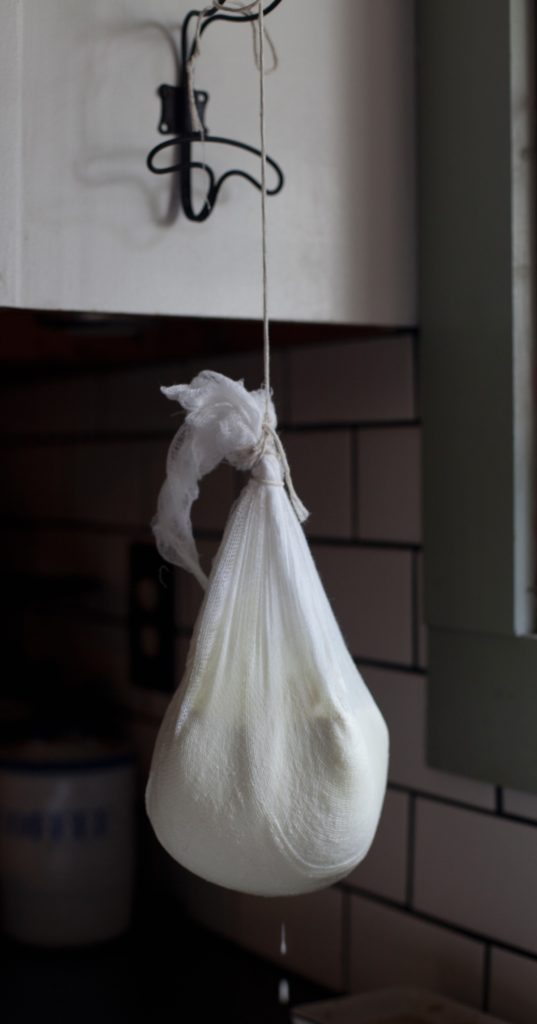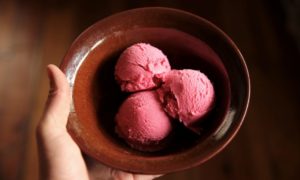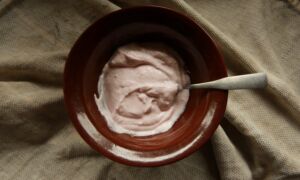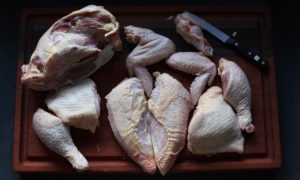Milk. Glorious fresh, raw, creamy goats milk. It is quite possibly one of the things I am most proud of to be producing right here on our small farm. Our girls are fed an organic, non-gmo, soy free feed, with more browsing than they can eat. Their milk truly is as good as it gets and I get it fresh twice a day, everyday! When you have a couple of does in milk it’s easy to get overwhelmed with milk. I can’t keep up just drinking it alone! FYI, this is a very good problem to have. I love any and all dairy products, so my goal is to produce as many as I can with the milk that I have on hand.
Ricotta is one of the easiest and quickest cheeses that you can make with the simplest ingredients. It doesn’t have to age and is ready to use within a half hour or so, nor is it as temperamental as mozzarella. Bonus! Basically, it’s a great cheese to get your feet wet and isn’t everything better with a little ricotta? Some make ricotta with leftover whey from other cheeses, which makes a skim/low fat ricotta. I however am a full fat/whole milk kind of girl, so I make my ricotta with milk not whey. Here’s how to make it:

Ingredients & Directions
- 1 gallon milk
- 1 teaspoon salt
- 1 teaspoon citric acid dissolved in 1/4 cup cool water (some use vinegar here as the “acid” but I have citric acid on hand for mozzarella so this is what I use)
- Add one gallon of fresh raw milk to a stockpot. Add 1 teaspoon of salt and 1 teaspoon of citric acid dissolved in 1/4 cup cool water to the milk.
- Bring stove up to medium- medium high heat and slowly heat up milk stirring frequently and slowly to prevent sticking and scorching.
- Once the milk reaches a temperature of 190-195 degrees F, you will see the curds begin to separate from the whey. At this point continue to slowly stir until you are seeing distinct curds begin to form.
- At this point, remove the pot from the heat, cover, and let sit for 10 minutes.
- While its sitting, line a large colander rested over a mixing bowl with two large pieces of cheese cloth.
- After the ten minutes are up, ladle the curds and whey into the cheesecloth lined colander. **Do not press to make more room this is why you’re using a large colander and bowl
- After you have added all of the curds and whey, pull up the corners of the cheesecloth, wrap and tie a string around them to secure and hang. You can hang from a cabinet door knob, or I have a hook on the side of a cabinet next to my sink that I use.
- Allow the whey to drip and drain (collecting in a bowl for use in other dishes or feeding to your pigs!) until the desired consistency is reached. I usually let mine go about 30 minutes, you can always pat dry later if you want drier ricotta!
- Remove the ricotta from the cheesecloth and put in an airtight container. Store in the fridge and enjoy!
Cheese Notes
- I use raw milk because that’s what I produce. If you don’t have access to raw, use vat pasteurized or as minimally pasteurized as possible. AKA not ultra pasteurized milk
- The key with goat’s milk in other cheese types is to not be too “rough” with the milk because of the structure of the molecules in goats milk. Rough treatment = tough cheese. So even with ricotta I treat the milk the same way. Be kind to it, stir gently!
- Do yourself a favor and use an over sized colander and bowl. You don’t want to be trying to transfer it in the middle of your ladling because you tried to save on the size. You will make a mess, and could lose some of your goodies! A gallon of milk is a lot more than it looks like.
- If you happen to over strain the ricotta, and it’s too dry for you, just fold some whey back in.



Pingback: Homemade Ricotta Gnocchi | The Modern Day Settler
I used this recipe and it was so simple! Seriously the easiest thing ever and a great way to use the milk from our goats. I just got my Instant Pot and ordered my culture so I can try her yogurt recipe! So excited!
It’s so incredibly easy and versatile!! Good luck with the yogurt, you’ll be hooked!
Pingback: Goat's Milk Mozzarella - The Modern Day Settler
If using bought milk do you allow it to come to room temp before starting?
No just add it to your stockpot cold with the citric acid/water mixture and salt and start to bring it all up to temperature.
Can the goat’s milk be fresh or should it be a couple days old?
Hi Lindsay! Yes you can use fresh because you’re acidifying it via citric acid/vinegar. For me I feel like the curds separate slightly quicker with milk that’s a couple days old but it’s not a world of difference and makes no difference in the finished product.